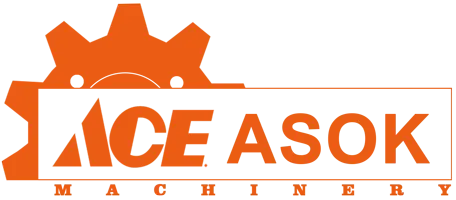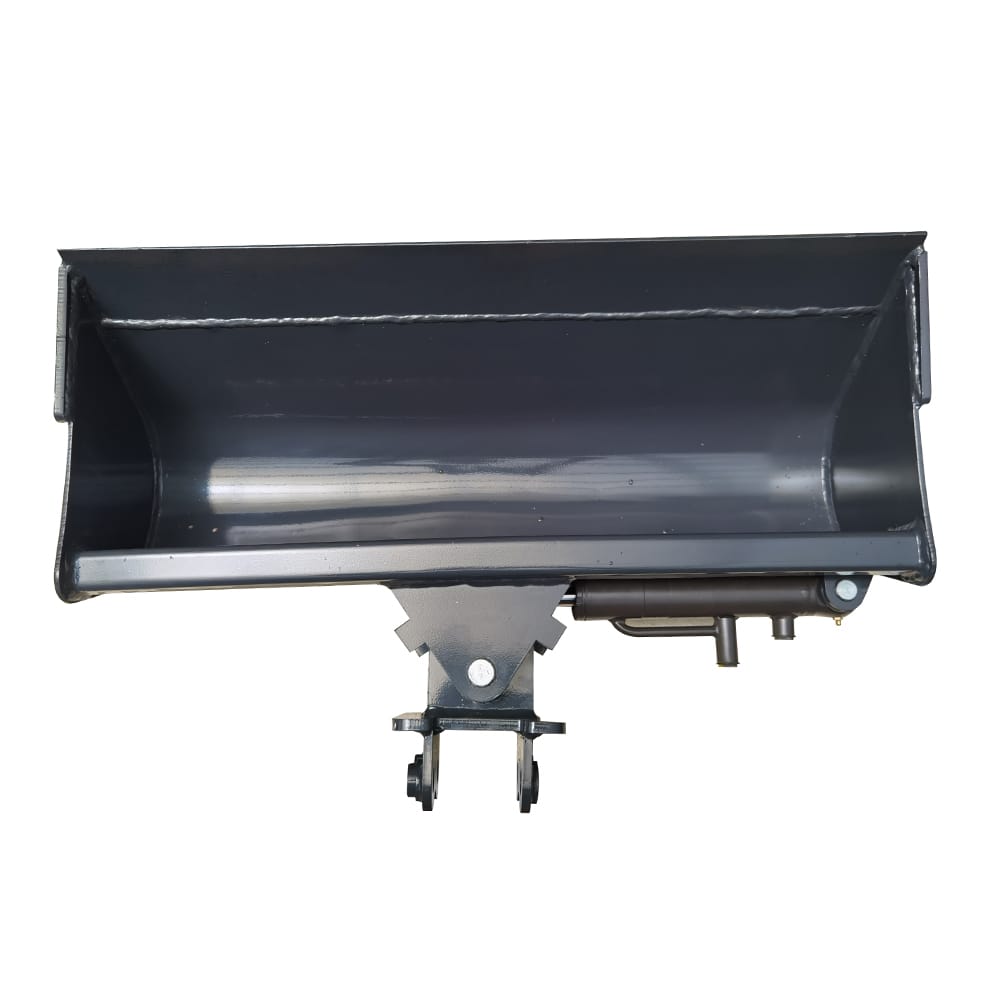In small-scale construction and municipal maintenance, the China mini excavator has become an essential piece of equipment thanks to its power, flexibility, and efficiency. Ningbo ACE Machinery’s CX12 and CX12-3 models have drawn significant attention for their outstanding performance. Below, we explore their core specifications, mini excavator dimensions, and advantages to help you make the right choice.
From Practicality to Efficiency
The CX12 is powered by a China Koop Original Engine single-cylinder air-cooled diesel engine, while the CX12-3 uses a Kubota D722 three-cylinder water-cooled diesel engine with Kubota’s patented TVCS combustion system. Both have a 719cc displacement, but the CX12-3 delivers 30% higher power density and an extra 1.6kW power reserve, meeting Stage-V Euro V standards. With its upgraded power, enhanced safety, and easy maintenance, the CX12-3 is ideal for high-load continuous operations, while the CX12 remains the cost-effective option for budget-conscious users.
“Muscle Memory” in a Compact Body
Key Operating Parameters Analysis,Both models maintain an ultra-compact size of 2750mm x 900mm (with standard bucket), but the CX12-3 achieves a performance boost through enhanced power:
Digging and Lifting Capacity
Arm digging force: Both models boast 4.5kN (460kgf), but the CX12-3 boasts a 12% increase in combined motion speed (the response time for boom, arm, and bucket coordinated operation is reduced to 0.8 seconds).
Lifting Performance: At a 1.0m radius and 0° elevation, the CX12-3’s forward lifting force reaches 3.1kN (310kg), a 9% increase over the CX12 (due to optimized overall counterweight).
Chassis and Roadability
Ground Pressure: Both models boast 28.1kPa (0.28kgf/cm²). 180mm-wide rubber tracks enable operation on sensitive surfaces such as turf.
Gradability: The CX12-3’s gradeability is improved to 30° (compared to 25° for the CX12), thanks to the low-speed torque characteristics of the D722 engine.
Scenario-Based Selection Decision Matrix
Based on the compatibility between equipment features and project requirements, the following decision model was established:
CX12: Economical and Practical Choice
Budget-Sensitive Projects: Minor Municipal Maintenance, Agricultural Greenhouse Renovation (Daily Operation Less Than 4 Hours)
Non-Environmentally Restricted Areas: Rural Road Construction, Indoor Demolition (No Mandatory Emissions Requirements)
Easy Maintenance Requirements: Operators with basic mechanical knowledge can perform routine maintenance independently

CX12-3: High-Performance Professional Choice
High-Load Continuous Operations: Urban Pipeline Renovation, Small Mine Stripping (Daily Operation 8-10 Hours)
Strict Environmental Protection Areas: EU Market, Core Areas of First-Tier Chinese Cities (Stage-V Emissions Certification Required)
Leasing Operations: With a three-year value retention rate of 65%, it’s suitable for leasing companies looking to renew their fleets.
Both models maintain an ultra-compact 2750mm chassis, making them ideal for operations in confined spaces. The key difference lies in their focus on “basic functionality” and “upgraded experience.”

| Model | CX12 | CX12-3 |
| Operating weight kg | 1020 | 1050 |
| Bucket capacity std. SAE/CECE m³ | 0.024/0.020 | 0.024/0.020 |
| Bucket width | 400 | 400 |
| (with/without side teeth) | ||
| Engine | ||
| Model | CHINA KOOP | JAPAN KUBOTA D722 |
| Type | Air-cooled diesel engine | Water-cooled diesel engine |
| kW/rpm | 8.6 | 10.2 |
| Number of cylinder | 1 | 3 |
| Bore X Stroke mm | 92×75 | 67 X 68 |
| Displacement cc | 719 | 719 |
| Dimensions | ||
| Overall length mm | 2750 | 2750 |
| Overall height mm | 2260 | 2260 |
| Swivelling speed rpm | 8.3 | 8.3 |
| Rubber shoe width mm | 180 | 180 |
| Tumbler distance mm | 900 | 900 |
| Dozer size( width X height) mm | 700/860 X 200 | 700/860 X 200 |
| Hydraulic pumps | ||
| P1, P2 | Gear pump | Gear pump |
| Flow rate l/min | 10.5+10.5 | 10.5+10.5 |
| Hydraulic pressure Mpa(kgf/cm2) | 16.2(165) | 16.2(165) |
| P3 | – | – |
| Flow rate l/min | – | – |
| Hydraulic pressure Mpa(kgf/cm2) | – | – |
| Max. Digging force (arm/bucket) kN(kgf) | 4.5(460)/ 9.8(1000) | 4.5(460)/ 9.8(1000) |
| Boom swing angle (left/ right) deg. | 55/55 | 55/55 |
| Auxiliary circuit | ||
| Flow rate l/min | 21 | 21 |
| Hydraulic pressure Mpa(kgf/cm2) | 16.2(165) | 16.2(165) |
| Hydraulic reservoir l | 13.5 | 13.5 |
| Fuel tank capacity l | 12 | 12 |
| Operation Way | Mechanical valve operation | Mechanical valve operation |
| Travel Motor | Eaton Orbital motor | Eaton Orbital motor |
| Max. travelling speed (low / high) km/h | single speed ,2km/h | single speed ,2km/h |
| Ground contact pressur Mpa(kgf/cm2) | 28.1(0.28) | 28.1(0.28) |
| Ground clearance mm | 150 | 150 |
| Noise level | ||
| LpA / LwA (2000/14/EC) dB(A) | 76/90 | 76/90 |
| Vibration | ||
| Hand arm system (ISO 5349-1:2001) | ||
| Digging / Levelling m/s2 RMS | <2.5/<2.5 | <2.5/<2.5 |
| Driving / Idling m/s2 RMS | <2.5/<2.5 | <2.5/<2.5 |
| Whole body(ISO 2631-1:1997) | ||
| Digging / Levelling m/s2 RMS | <0.5/<0.5 | <0.5/<0.5 |
| Driving / Idling m/s2 RMS | 1.15/<0.5 | 1.15/<0.5 |
Why Choose Ningbo ACE Machinery
As a trusted mini excavator factory in China, Ningbo ACE Machinery provides a full range of models — from the reliable 1 ton mini excavator to larger, more powerful units. Each compact mini excavator is engineered for durability, fuel efficiency, and user comfort, making ACE a global leader in small construction machinery.
Both the CX12 and CX12-3 represent top-quality China mini excavator engineering. Whether you need a low-cost model for light use or a premium machine for professional applications, Ningbo ACE offers the right equipment for your needs.
FAQ
The same tonnage of the excavator price difference is so big?
The price difference mainly stems from the brand premium, the source of core components (such as engines, hydraulic pumps), technical content and configuration level. Models with imported key components cost more but are usually more reliable; and additional features such as intelligent control systems and energy-saving technologies will also increase the cost. It is recommended to weigh according to the budget and intensity of use, do not have to blindly pursue high configuration.
How to Start a Mini Excavator for Beginners?
To start a mini excavator, first inspect the machine — check oil, fuel, and hydraulic fluid levels. Enter safely using handrails, fasten your seatbelt, and ensure all levers are in neutral. Turn the key to “ON,” wait for indicators to clear, then start the engine. Let it idle for a few minutes to warm up. Release the safety lock lever to activate the controls, and test all movements slowly. Beginners should practice smooth control of the boom, arm, and bucket in an open area before starting real work.
How Deep Will a Mini Excavator Dig?
Digging depth depends on mini excavator sizes and model design. Generally, a 1 ton mini excavator like ACE’s CX12 can dig about 1.8–2.0 meters deep, while 1.5–2 ton models reach around 2.5 meters. Larger 3–6 ton compact mini excavators can dig up to 4 meters. Choosing a model with slightly greater depth than required provides better flexibility on-site. Always review the manufacturer’s specifications or mini excavator comparison chart to select the best model for your projects — ensuring efficient trenching, landscaping, and foundation work across diverse construction environments.
What to Ask When Buying a Mini Excavator?
Before buying a mini excavator, ask about the machine’s engine type, hydraulic system, and mini excavator dimensions to confirm it fits your work needs. Check whether it supports attachments such as buckets or breakers. Request a mini excavator comparison chart to evaluate digging depth, power, and weight. Confirm warranty terms, spare parts availability, and emission standards like CE or Euro V certification. Finally, inquire about delivery time and after-sales support. Reliable suppliers like Ningbo ACE Machinery offer professional advice, high-quality China mini excavators, and full service for long-term satisfaction.
How to judge whether the supplier’s after-sales service is reliable?
It can be assessed by the following indicators: the average distance between service outlets and construction sites, the promised response time, whether to provide standby service, the supply cycle of spare parts, and the qualification of service engineers. It is recommended to inspect the service experience of several purchased customers on the spot and pay attention to the fault resolution rate and service attitude.





